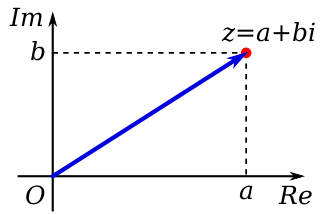Cauchy's functional equation is the functional equation:
Contents
- Solutions over the rational numbers
- Properties of nonlinear solutions over the real numbers
- Existence of nonlinear solutions over the real numbers
- See also
- References
- External links
A function that solves this equation is called an additive function. Over the rational numbers, it can be shown using elementary algebra that there is a single family of solutions, namely for any rational constant Over the real numbers, the family of linear maps now with an arbitrary real constant, is likewise a family of solutions; however there can exist other solutions not of this form that are extremely complicated. However, any of a number of regularity conditions, some of them quite weak, will preclude the existence of these pathological solutions. For example, an additive function is linear if:
- is continuous (Cauchy, 1821). In fact, it suffices for to be continuous at one point (Darboux, 1875).
- is monotonic on any interval.
- is bounded on any interval.
- is Lebesgue measurable.
On the other hand, if no further conditions are imposed on then (assuming the axiom of choice) there are infinitely many other functions that satisfy the equation. This was proved in 1905 by Georg Hamel using Hamel bases. Such functions are sometimes called Hamel functions. [1]
The fifth problem on Hilbert's list is a generalisation of this equation. Functions where there exists a real number such that are known as Cauchy-Hamel functions and are used in Dehn-Hadwiger invariants which are used in the extension of Hilbert's third problem from 3D to higher dimensions. [2]
This equation is sometimes referred to as Cauchy's additive functional equation to distinguish it from Cauchy's exponential functional equation Cauchy's logarithmic functional equation and Cauchy's multiplicative functional equation






































































































